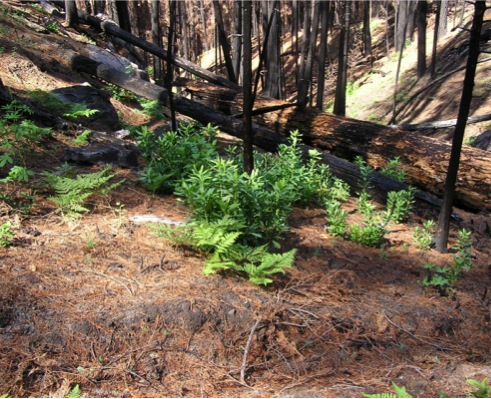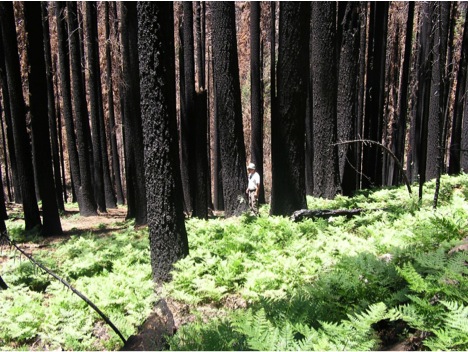Last year the Forest Service reached out to diverse interests with invitations to participate in “reforestation workshops” that brought together citizen activists, timber industry representatives, and a range of agency specialists. At those workshops, the Forest Service heard strong concerns from conservation groups that oppose widespread hericide spraying and that also oppose the historic practice of planting crops of conifer trees in endless rows instead of re-growing a more natural forest. CSERC was active in the reforestation discussions and helped coordinate a middle ground reforestaion concept policy for the Yosemite Stanislaus Solutions collaborative group.
CSERC and other participants in those workshops were highly surprised when the Stanislaus Forest recently produced a Rim Fire Reforestation Plan to replant conifers across 26,000 acres of badly burned portions of the Rim fire. Instead of minimizing herbicide use, the Reforestation Plan calls for spraying glyphosate on every planted acre. The goal would be to kill the ferns, grasses, bushes, or other plants that are now growing (as shown in the photos). Then every acre would be sprayed a second time to “release” the conifer seedlings from competing plants. Two years later each of the nearly 26,000 acres could be sprayed again, and two years later each acre could be sprayed a fourth time to keep killing any plants that might compete with trees for water or nutrients. Forest staff justifies the intensive use of herbicides by referring to their goal of having 70-80% of tree seedlings survive. CSERC points out that forests re-grew after wildfires for thousands of years without the use of herbicides. Our position is that conifer tree seedlings are just one of many plants that together make up a “forest” ecosystem. Using widespread chemical treatments to kill back most of the other plants in order to maximize the growth and survival of a crop of conifers is likely to spark lawsuits that could block any reforestation. Even within the local community, which strongly supports Rim Fire reforesation, the high level of herbicide use proposed by the Forest Service is polarizing.



